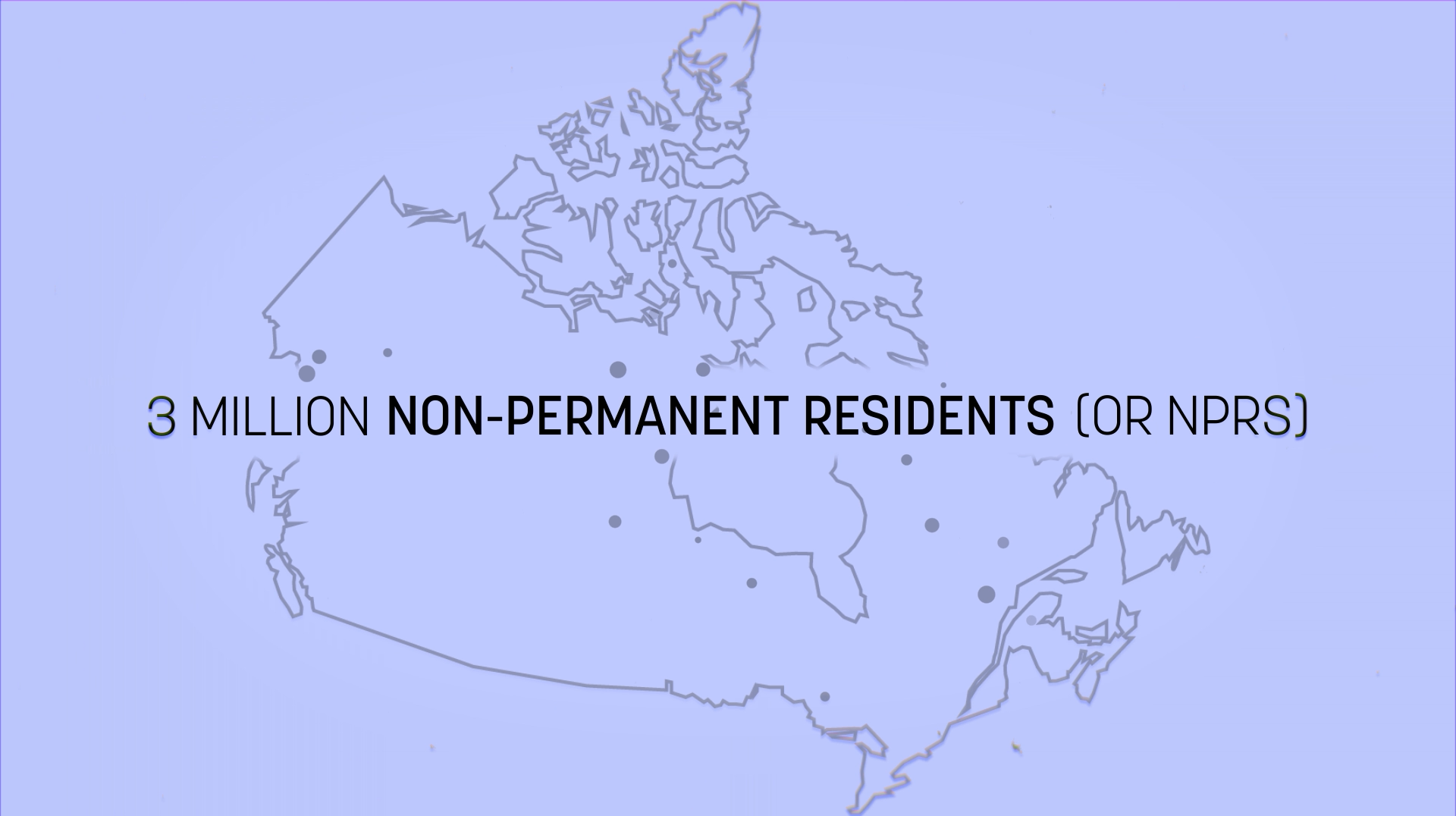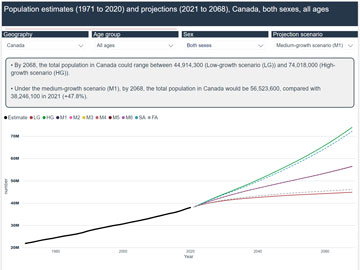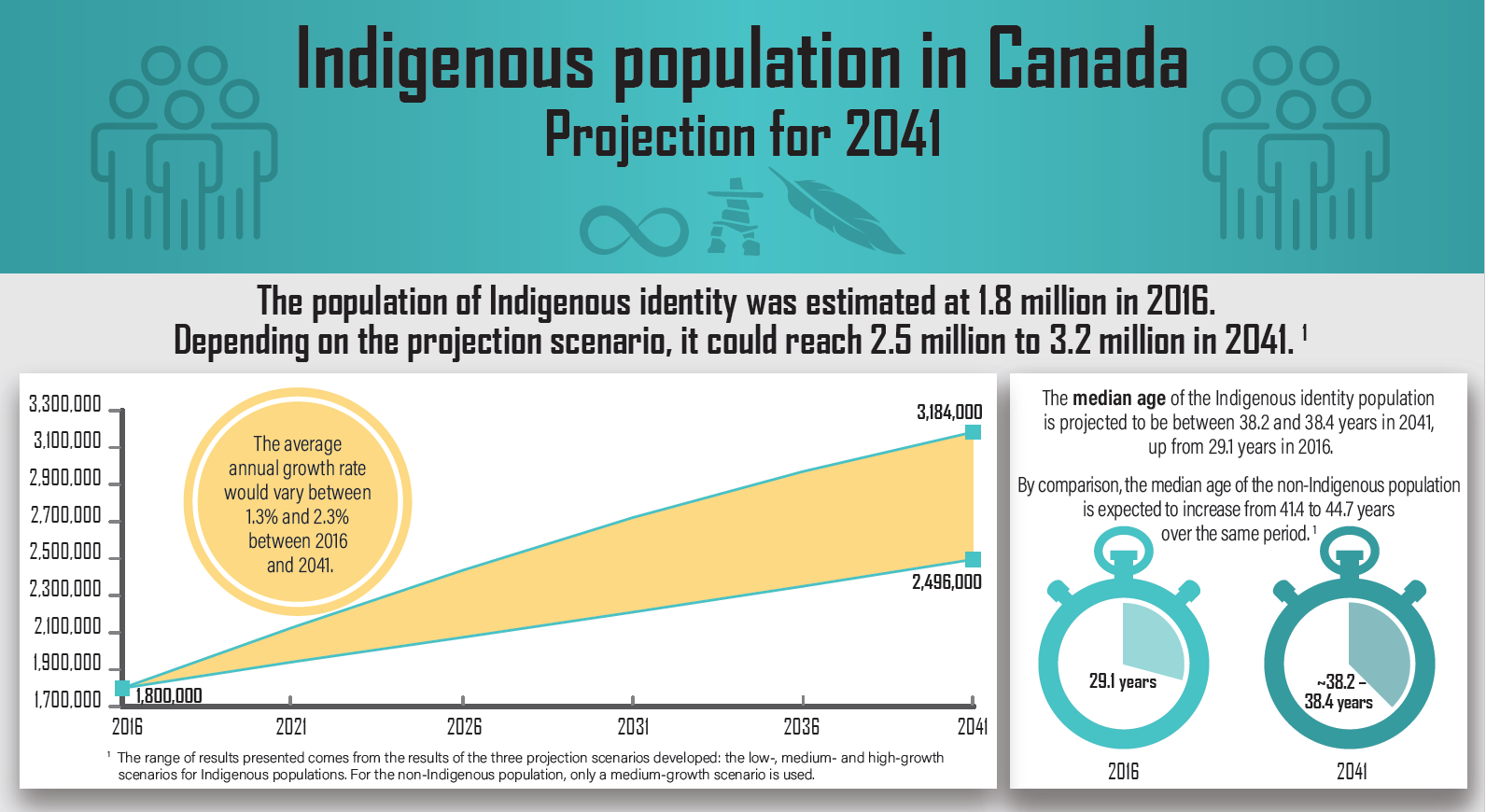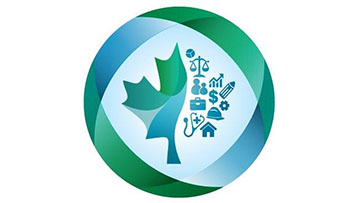Why do we conduct this survey?
This survey's purpose is to collect information on the scientific activities of higher education sector organizations in Canada. This sector is composed of all universities, colleges of technology and other institutions providing formal tertiary education programs, as well as all research institutes, centres, experimental stations and clinics that are affiliated with higher education institutions.
The research and development expenditures and personnel information is used by federal, provincial and territorial governments and agencies, academics and international organizations for statistical analyses and policy purposes.
Your information may also be used by Statistics Canada for other statistical and research purposes.
Your participation in this survey is required under the authority of the Statistics Act.
Other important information
Authorization to collect this information
Data are collected under the authority of the Statistics Act, Revised Statutes of Canada, 1985, Chapter S-19.
Confidentiality
By law, Statistics Canada is prohibited from releasing any information it collects that could identify any person, business, or organization, unless consent has been given by the respondent, or as permitted by the Statistics Act. Statistics Canada will use the information from this survey for statistical purposes only.
Record linkages
To enhance the data from this survey and to reduce the reporting burden, Statistics Canada may combine the acquired data with information from other surveys or from administrative sources.
Data-sharing agreements
To reduce respondent burden, Statistics Canada has entered into data-sharing agreements with provincial and territorial statistical agencies and other government organizations, which have agreed to keep the data confidential and use them only for statistical purposes. Statistics Canada will only share data from this survey with those organizations that have demonstrated a requirement to use the data.
Section 11 of the Statistics Act provides for the sharing of information with provincial and territorial statistical agencies that meet certain conditions. These agencies must have the legislative authority to collect the same information, on a mandatory basis, and the legislation must provide substantially the same provisions for confidentiality and penalties for disclosure of confidential information as the Statistics Act. Because these agencies have the legal authority to compel respondents to provide the same information, consent is not requested and respondents may not object to the sharing of the data.
For this survey, there are Section 11 agreements with the provincial and territorial statistical agencies of Newfoundland and Labrador, Nova Scotia, New Brunswick, Quebec, Ontario, Manitoba, Saskatchewan, Alberta, British Columbia and the Yukon. The shared data will be limited to information on in-house research and development expenditures (Question 18) and in-house research and development personnel (Question 26) pertaining to higher education sector organizations located within the jurisdiction of the respective province or territory.
Section 12 of the Statistics Act provides for the sharing of information with federal, provincial or territorial government organizations.
Under Section 12, you may refuse to share your information with any of these organizations by writing a letter of objection to the Chief Statistician, specifying the organizations with which you do not want Statistics Canada to share your data and mailing it to the following address:
Chief Statistician of Canada
Statistics Canada
Attention of Director, Enterprise Statistics Division
150 Tunney's Pasture Driveway
Ottawa, Ontario
K1A 0T6
You may also contact us by email at statcan.esdhelpdesk-dsebureaudedepannage.statcan@statcan.gc.ca or by fax at 613-951-6583.
For this survey, there are Section 12 agreements with the statistical agencies of Prince Edward Island, the Northwest Territories and Nunavut. The shared data will be limited to information on in-house research and development expenditures (Question 18) and in-house research and development personnel (Question 26) pertaining to higher education sector organizations located within the jurisdiction of the respective province or territory.
Business or organization and contact information
1. Verify or provide the business or organization's legal and operating name and correct where needed.
Note: Legal name modifications should only be done to correct a spelling error or typo.
Legal Name
The legal name is one recognized by law, thus it is the name liable for pursuit or for debts incurred by the business or organization. In the case of a corporation, it is the legal name as fixed by its charter or the statute by which the corporation was created.
Modifications to the legal name should only be done to correct a spelling error or typo.
To indicate a legal name of another legal entity you should instead indicate it in question 3 by selecting 'Not currently operational' and then choosing the applicable reason and providing the legal name of this other entity along with any other requested information.
Operating Name
The operating name is a name the business or organization is commonly known as if different from its legal name. The operating name is synonymous with trade name.
- Legal name:
- Operating name (if applicable):
2. Verify or provide the contact information of the designated business or organization contact person for this questionnaire and correct where needed.
Note: The designated contact person is the person who should receive this questionnaire. The designated contact person may not always be the one who actually completes the questionnaire.
- First name:
- Last name:
- Title:
- Preferred language of communication:
- Mailing address (number and street):
- City:
- Province, territory or state:
- Postal code or ZIP code:
- Country:
- Email address:
- Telephone number (including area code):
- Extension number (if applicable):
The maximum number of characters is 10.
- Fax number (including area code):
3. Verify or provide the current operational status of the business or organization identified by the legal and operating name above.
- Operational
- Not currently operational
- Why is this business or organization not currently operational?
- Seasonal operations
- When did this business or organization close for the season? Date
- When does this business or organization expect to resume operations? Date
- Ceased operations
- When did this business or organization cease operations? Date
- Why did this business or organization cease operations?
- Bankruptcy
- Liquidation
- Dissolution
- Other
Specify the other reasons for ceased operations
- Sold operations
- When was this business or organization sold? Date
- What is the legal name of the buyer?
- Amalgamated with other businesses or organizations
- When did this business or organization amalgamate? Date
- What is the legal name of the resulting or continuing business or organization?
- What are the legal names of the other amalgamated businesses or organizations?
- Temporarily inactive but will re-open
- When did this business or organization become temporarily inactive? Date
- When does this business or organization expect to resume operations? Date
- Why is this business or organization temporarily inactive?
- No longer operating due to other reasons
- When did this business or organization cease operations? Date
- Why did this business or organization cease operations?
4. Verify or provide the current main activity of the business or organization identified by the legal and operating name above.
Note: The described activity was assigned using the North American Industry Classification System (NAICS).
This question verifies the business or organization's current main activity as classified by the North American Industry Classification System (NAICS). The North American Industry Classification System (NAICS) is an industry classification system developed by the statistical agencies of Canada, Mexico and the United States. Created against the background of the North American Free Trade Agreement, it is designed to provide common definitions of the industrial structure of the three countries and a common statistical framework to facilitate the analysis of the three economies. NAICS is based on supply-side or production-oriented principles, to ensure that industrial data, classified to NAICS, are suitable for the analysis of production-related issues such as industrial performance.
The target entity for which NAICS is designed are businesses and other organizations engaged in the production of goods and services. They include farms, incorporated and unincorporated businesses and government business enterprises. They also include government institutions and agencies engaged in the production of marketed and non-marketed services, as well as organizations such as professional associations and unions and charitable or non-profit organizations and the employees of households.
The associated NAICS should reflect those activities conducted by the business or organizational units targeted by this questionnaire only, as identified in the 'Answering this questionnaire' section and which can be identified by the specified legal and operating name. The main activity is the activity which most defines the targeted business or organization's main purpose or reason for existence. For a business or organization that is for-profit, it is normally the activity that generates the majority of the revenue for the entity.
The NAICS classification contains a limited number of activity classifications; the associated classification might be applicable for this business or organization even if it is not exactly how you would describe this business or organization's main activity.
Please note that any modifications to the main activity through your response to this question might not necessarily be reflected prior to the transmitting of subsequent questionnaires and as a result they may not contain this updated information.
The following is the detailed description including any applicable examples or exclusions for the classification currently associated with this business or organization.
Description and examples
- This is the current main activity
- This is not the current main activity
Provide a brief but precise description of this business or organization's main activity:
e.g., breakfast cereal manufacturing, shoe store, software development
Main activity
5. You indicated that is not the current main activity. Was this business or organization's main activity ever classified as: ?
- Yes
When did the main activity change?
Date:
- No
6. Search and select the industry classification code that best corresponds to this business or organization's main activity.
Select this business or organization's activity sector (optional)
- Farming or logging operation
- Construction company or general contractor
- Manufacturer
- Wholesaler
- Retailer
- Provider of passenger or freight transportation
- Provider of investment, savings or insurance products
- Real estate agency, real estate brokerage or leasing company
- Provider of professional, scientific or technical services
- Provider of health care or social services
- Restaurant, bar, hotel, motel or other lodging establishment
- Other sector
7. You have indicated that the current main activity of this business or organization is: Main activity. Are there any other activities that contribute significantly (at least 10%) to this business or organization's revenue?
- Yes, there are other activities
Provide a brief but precise description of this business or organization's secondary activity:
e.g., breakfast cereal manufacturing, shoe store, software development
- No, that is the only significant activity
8. Approximately what percentage of this business or organization's revenue is generated by each of the following activities?
When precise figures are not available, provide your best estimates.
Approximately what percentage of this business or organization's revenue is generated by each of the following activities?
| |
Percentage of revenue |
|---|
| Main activity |
|
|---|
| Secondary activity |
|
|---|
| All other activities |
|
|---|
| Total percentage |
|
|---|
Reporting period
1. What is the end date of this organization's fiscal year?
Note: For this survey, this organization's fiscal year end date should fall on or before August 31, 2019.
Here are some examples of fiscal periods that fall within the targeted dates:
May 1, 2017 to April 30, 2018
July 1, 2017 to June 30, 2018
October 1, 2017 to September 30, 2018
January 1, 2018 to December 31, 2018
February 1, 2018 to January 31, 2019
April 1, 2018 to March 31, 2019
Note: This fiscal year will be referred to as 2018 throughout the questionnaire.
Fiscal Year-End date:
Organization status
2. What is this organization's business number (e.g., GST number or charitable registration number)?
Business number (9-digit number):
3. Is this organization affiliated with a hospital, a university or a government agency or department?
4. In 2018, what were this organization's total expenditures within Canada?
Please report all amounts in thousands of Canadian dollars.
If precise figures are not available, please provide your best estimate.
Total expenditures represent the total budget for all operations of this organization in the fiscal period. If 'total expenditures' cannot be calculated, total funds (from members, government programs and all other sources of funds) or total revenues can be provided.
CAN$ '000:
5. In 2018, what were this organization's total wages and salaries within Canada?
Please report all amounts in thousands of Canadian dollars.
If precise figures are not available, please provide your best estimate.
CAN$ '000:
6. In 2018, what was the average number of employees in full-time equivalents (FTE) within Canada for this organization?
If precise figures are not available, please provide your best estimate in full-time equivalents (FTE).
Full-time equivalent (FTE)
The organization's personnel is composed of full-time and part-time employees.
Full-time equivalent (FTE) = Number of persons who work full-time for the organization + part-time workers.
Example calculation: If out of four employees, one works full-time for the organization and the remaining three devote only one quarter of their working time to the organization, then: FTE = 1 + 1/4 + 1/4 + 1/4 = 1.75 employees.
In-house research and development ( R&D ) expenditures
Before you begin
For this survey 'In-house R&D ' refers to:
Expenditures within Canada for R&D performed within this organization by:
- employees (permanent, temporary or casual)
- self-employed individuals or contractors who are working on-site on this organization's R&D projects.
'Payments for R&D performed by other organizations' refers to:
Payments made within or outside Canada to other organizations, individuals or companies to fund R&D performance:
- grants
- fellowships
- contracts.
In-house research and development ( R&D ) expenditures
7. In 2018, did this organization have expenditures for R&D performed in-house within Canada?
Exclude payments for R&D performed by others (e.g., funding, grants or contracted out R&D expenditures), which should be reported in question 13.
In-house refers to R&D which is performed on-site or within the organization's establishment. Exclude R&D expenses performed by other companies or organizations. A later question will collect these data.
Research and experimental development (R&D) comprise creative and systematic work undertaken in order to increase the stock of knowledge - including knowledge of humankind, culture and society - and to devise new applications of available knowledge.
R&D is performed in the natural sciences, engineering, social sciences and humanities. There are three types of R&D activities: basic research, applied research and experimental development.
Research work in the social sciences
Include if projects are employing new or significantly different modelling techniques or developing new formulae, analyzing data not previously available or applying new research techniques, development of community strategies for disease prevention or health education.
Exclude:
- routine analytical projects using standard techniques and existing data
- routine market research
- routine statistical analysis intended for on-going monitoring of an activity.
8. In 2018, what were this organization's expenditures for R&D performed in-house within Canada?
Exclude payments for R&D performed by others (e.g., funding, grants or contracted out R&D expenditures), which should be reported in question 13.
Please report all amounts in thousands of Canadian dollars.
Report '0' for no R&D expenditures.
In-house R&D expenditures are composed of current in-house R&D expenditures and capital in-house R&D expenditures.
Current in-house R&D expenditures
Include:
- wages, salaries, benefits and fringe benefits, materials and supplies
- services to support R&D, including on-site R&D consultants and contractors
- necessary background literature
- minor scientific equipment
- associated administrative overhead costs.
a. Wages, salaries of permanent, temporary and casual R&D employees
Include benefits and fringe benefits of employees engaged in R&D activities. Benefits and fringe benefits include bonus payments, holiday or vacation pay, pension fund contributions, other social security payments, payroll taxes, etc.
b. Services to support R&D
Include:
- payments to on-site R&D consultants and contractors working under the direct control of your organization
- other services including indirect services purchased to support in-house R&D such as security, storage, repair, maintenance and use of buildings and equipment
- computer services, software licensing fees and dissemination of R&D findings.
c. R&D materialsInclude:
- water, fuel, gas and electricity
- materials for creation of prototypes
- reference materials (books, journals, etc.)
- subscriptions to libraries and data bases, memberships to scientific societies, etc.
- cost of outsourced (contracted out or granted) small R&D prototypes or R&D models
- materials for laboratories (chemicals, animal, etc.)
- all other R&D -related materials.
d. All other current R&D costs including overhead
Include administrative and overhead costs (e.g., office, post and telecommunications, internet, insurance), prorated if necessary to allow for non- R&D activities within the business.
Exclude:
- interest charges
- value-added taxes (goods and services tax (GST) or harmonized sales tax (HST)).
Capital in-house expenditures are the annual gross amount paid for the acquisition of fixed assets that are used repeatedly, or continuously in the performance of R&D for more than one year. Report capital in-house expenditures in full for the period when they occurred.
Include costs for software, land, buildings and structures, equipment, machinery and other capital costs.
Exclude capital depreciation.
e. SoftwareInclude applications and systems software (original, customized and off-the-shelf software), supporting documentation and other software-related acquisitions.
f. Land acquired for R&D including testing grounds, sites for laboratories and pilot plants.
g. Buildings and structures that are constructed or purchased for R&D activities or that have undergone major improvements, modifications, renovations and repairs for R&D activities.
h. Equipment, machinery and all other capital
Include major equipment, machinery and instruments, including embedded software, acquired for R&D activities.
In 2018, what were this organization's expenditures for R&D performed in-house within Canada?
| |
CAN$ '000 |
|---|
| 2018 - Current in-house R&D expenditures within Canada |
|
|---|
a. Wages, salaries of permanent, temporary and casual R&D employees
Include fringe benefits. |
|
|---|
b. Services to support R&D
Include services of self-employed individuals or contractors who are working on-site on this organization's R&D projects.
Exclude contracted out or granted expenditures to other organizations to perform R&D (report in question 13). |
|
|---|
| c. R&D materials |
|
|---|
d. All other current R&D costs
Include overhead costs. |
|
|---|
| 2018 - Total current in-house R&D expenditures within Canada |
|
|---|
| 2018 - Capital in-house R&D expenditures within Canada |
|
|---|
e. Software
Exclude capital depreciation. |
|
|---|
f. Land
Exclude capital depreciation. |
|
|---|
g. Buildings and structures
Exclude capital depreciation. |
|
|---|
h. Equipment, machinery and all other capital
Exclude capital depreciation. |
|
|---|
| 2018 - Total capital in-house R&D expenditures within Canada |
|
|---|
| 2018 - Total in-house R&D expenditures within Canada |
|
|---|
9. In 2019 and 2020, does this organization plan to make expenditures for R&D performed in-house within Canada?
Exclude payments for R&D performed by others (e.g., funding, grants or contracted out R&D expenditures), which should be reported in question 15.
Select all that apply.
Help text:
In-house R&D expenditures are composed of current in-house R&D expenditures and capital in-house R&D expenditures.
Research and experimental development R&D comprise creative and systematic work undertaken in order to icrease the stock of knowledge - including knowledge of humankind, culture and society - and to devise new applications of available knowledge.
- Inclusions
- Prototypes
- Include design, construction and operation of prototypes, provided that the primary objective is to make furtherimprovements or to undertake technical testing.
- Exclude if the prototype is for commercial purposes.
- Pilot plants
- Include construction and operation of pilot plants, provided that the primary objective is to make further imprements or to undertake technical testing.
- Exclude if the pilot plant is intended to be operated for commercial purposes.
- New computer software or significant improvements/modifications to existing computer softwar
- Includes technological or scientific advances in theoretical computer sciences; operating systems e.g., improvement in interface management, developing new operating system of converting an existing operating system to a significantly different hardware environment; programming languages; and applications if a significant technological change occurs.
- Contracts
- Include all contracts which require R&D. For contracts which include other work, report only the R&D costs.
- Research work in the social sciences
- Include if projects are employing new or significantly different modelling techniques or developing new formulae analyzing data not previously available or applying new research techniques.
- Exclusions
- Routine analysis in the social sciences including policy-related studies, management studies and efficiency studies
- Exclude analytical projects of a routine nature, with established methodologies, principles and models of the related social sciences to bear on a particular problem (e.g., commentary on the probable economic effects of a change in the tax structure, using existing economic data; use of standard techniques in applied psychology to select and classify industrial and military personnel, students, etc., and to test children with reading or other disabilities).
- Consumer surveys, advertising, market research
- Exclude projects of a routine nature, with established methodologies intended for commercialization of the results of R&D.
- Routine quality control and testing
- Exclude projects of a routine nature, with established methodologies not intended to ceate new knowledge, even if carried out by personnel normally engaged in R&D.
- Pre-production activities such as demonstration of commercial viability, tooling up, trial production, trouble shooting
- Although R&D may be required as a result of these steps, these activities are excluded.
- Prospecting, exploratory drilling, development of mines, oil or gas wells
- Include only if for R&D projects concerned with new equipment or techniques in these activities, such as in-situ and tertiary recovery research.
- Engineering
- Exclude engineering unless it is in direct support of R&D.
- Design and drawing
- Exclude design and drawing unless it is in direct support of R&D.
- Patent and licence work
- Exclude all administrative and legal work connected with patents and licences.
- Cosmetic modifications or style changes to existing products
- Exclude if no significant technical improvement or modification to the existing products has occurred.
- General purpose or routine data collection
- Exclude projects of a routine nature, with established methodologies intended for on-going monitoring of an activity.
- Routine computer programming, systems maintenance or software application
- Exclude projects of a routine nature, with established methodologies intended to support on-going operations.
- Routine mathematical or statistical analysis or operations analysis
- Exclude projects of a routine nature, with established methodologies intended for on-going monitoring of an activity.
- Activities associated with standards compliance
- Exclude projects of a routine nature, with established methodologies intended to support standards compliance.
- Specialized routine medical care such as routine pathology services
- Exclude projects of a routine nature, with established methodologies intended for on-going monitoring of an activity.
Response text:
- In 2019
- In 2020
- No planned in-house R&D expenditures
10. In 2019, what are this organization's planned expenditures for R&D performed in-house within Canada?
Exclude payments for R&D performed by others (e.g., funding, grants or contracted out R&D expenditures), which should be reported in question 15.
Please report all amounts in thousands of Canadian dollars.
If precise figures are not available, please provide your best estimate.
Report '0' for no R&D expenditures.
In 2019, what are this organization's planned expenditures for R&D performed in-house within Canada?
| |
CAN$ '000 |
|---|
| a. 2019 - Total current in-house R&D expenditures within Canada |
|
|---|
b. 2019 - Total capital in-house R&D expenditures within Canada
Exclude capital depreciation. |
|
|---|
11. In 2020, what are this organization's planned expenditures for R&D performed in-house within Canada?
Exclude payments for R&D performed by others (e.g., funding, grants or contracted out R&D expenditures), which should be reported in question 15.
Please report all amounts in thousands of Canadian dollars.
If precise figures are not available, please provide your best estimate.
Report '0' for no R&D expenditures.
In 2020, what are this organization's planned expenditures for R&D performed in-house within Canada?
| |
CAN$ '000 |
|---|
| a. 2020 - Total current in-house R&D expenditures within Canada |
|
|---|
b. 2020 - Total capital in-house R&D expenditures within Canada
Exclude capital depreciation. |
|
|---|
Payments for R&D performed by other organizations
12. In 2018, did this organization make payments to other organizations to perform R&D within Canada or outside Canada?
Include:
- funding or grants provided to other organizations to perform R&D
- contracted out expenditures for R&D.
Exclude services of self-employed individuals or contractors who are working on-site on this organization's R&D projects, which should be reported in question 8.
Select all that apply.
- Within Canada
- Outside Canada
- No payment made to others to perform R&D
13. In 2018, what were this organization's R&D payments to other organizations within Canada or outside Canada?
Include:
- funding or grants provided to other organizations to perform R&D
- contracted out expenditures for R&D.
Exclude services of self-employed individuals or contractors who are working on-site on this organization's R&D projects, which should be reported in question 8.
Please report all amounts in thousands of Canadian dollars.
Report '0' for no R&D expenditures.
Include payments made through contracts, grants, donations and fellowships to another company, organization or individual to purchase or fund R&D activities.
Exclude expenditures for on-site R&D contractors.
Companies include all incorporated for-profit businesses and government business enterprises providing products in the market at market rates.
Private non-profit organizations include voluntary health organizations, private philanthropic foundations, associations and societies and research institutes. They are not-for-profit organizations that serve the public interest by supporting activities related to public welfare (such as health, education, the environment).
Industrial research institutes or associations include all non-profit organizations that serve the business sector, with industrial associations frequently consisting of their membership.
Federal government includes all federal government departments and agencies. It excludes federal government business enterprises providing products in the market.
Provincial or territorial governments include all provincial or territorial government ministries, departments and agencies. It excludes provincial or territorial government business enterprises providing products in the market.
Provincial or territorial research organizations are organizations created under provincial or territorial law which conduct or facilitate research on behalf of the province or territory.
Other organizations - individuals, non-university educational institutions, foreign governments including ministries, departments and agencies of foreign governments.
In 2018, what were this organization's R&D payments to other organizations within Canada or outside Canada?
| |
Within Canada
CAN$ '000 |
Outside Canada
CAN$ '000 |
|---|
| a. Companies |
|
|
|---|
| b. Other private non-profit organizations |
|
|
|---|
| c. Industrial research institutes or associations |
|
|
|---|
| d. Hospitals |
|
|
|---|
| e. Universities |
|
|
|---|
| f. Federal government departments and agencies |
|
|
|---|
| g. Provincial or territorial government departments, ministries and agencies |
|
|
|---|
| h. Provincial or territorial research organizations |
|
|
|---|
i. Other organizations
e.g., individuals, non-university educational institutions, foreign governments |
|
|
|---|
| 2018 - Total payments for R&D performed by other organizations |
|
|
|---|
14. In 2019 and 2020, does this organization plan to make payments to other organizations to perform R&D ?
Include:
- funding or grants provided to other organizations to perform R&D
- contracted out expenditures for R&D.
Exclude services of self-employed individuals or contractors who are working on-site on this organization's R&D projects, which should be reported in questions 10 and 11.
Select all that apply.
- In 2019
- In 2020
- No planned payments to others to perform R&D
15. In 2019 and 2020, what are this organization's planned payments to other organizations to perform R&D within Canada or outside Canada?
Include:
- funding or grants provided to other organizations to perform R&D
- contracted out expenditures for R&D .
Exclude services of self-employed individuals or contractors who are working on-site on this organization's R&D projects, which should be reported in questions 10 and 11.
Please report all amounts in thousands of Canadian dollars.
Report '0' for no R&D expenditures.
Include payments made through contracts, grants, donations and fellowships to another company, organization or individual to purchase or fund R&D activities.
Exclude services of self-employed individuals or contractors who are working on-site on this organisation's R&D projects, which should have been reported earlier in the section "In-house research and development (R&D) expenditures".
In 2019 and 2020, what are this organization's planned payments to other organizations to perform R&D within Canada or outside Canada?
| |
Within Canada
CAN$ '000 |
Outside Canada
CAN$ '000 |
|---|
| a. 2019 |
|
|
|---|
| b. 2020 |
|
|
|---|
Summary of R&D expenditures from 2018 to 2020
16. Summary of R&D expenditures from 2018 to 2020
Summary of R&D expenditures from 2018 to 2020
| |
2018
CAN$ '000 |
2019
CAN$ '000 |
2020
CAN$ '000 |
|---|
| Total current in-house R&D expenditures within Canada |
|
|
|
|---|
| Total capital in-house R&D expenditures within Canada |
|
|
|
|---|
| Total in-house R&D expenditures within Canada |
|
|
|
|---|
| Total payments for R&D performed by other organizations |
|
|
|
|---|
| Total R&D expenditures |
|
|
|
|---|
Geographic distribution of in-house R&D expenditures within Canada in 2018
17. In 2018, in which provinces or territories did this organization have expenditures for R&D performed in-house?
Exclude:
- payments for R&D performed by others (e.g., funding, grants or contracted out R&D expenditures), which should be reported in question 13
- capital depreciation.
Select all that apply.
- Newfoundland and Labrador
- Prince Edward Island
- Nova Scotia
- New Brunswick
- Quebec
- Ontario
- Manitoba
- Saskatchewan
- Alberta
- British Columbia
- Yukon
- Northwest Territories
- Nunavut
18. In 2018, how were this organization's total expenditures for R&D performed in-house distributed by province or territory?
Exclude:
- payments for R&D performed by others (e.g., funding, grants or contracted out R&D expenditures), which should be reported in question 13
- capital depreciation.
Please report all amounts in thousands of Canadian dollars.
For in-house R&D activities on federal lands, please include in the closest province or territory.
In 2018, how were this organization's total expenditures for R&D performed in-house distributed by province or territory?
| |
Current in-house R&D expenditures
CAN$ '000 |
Capital in-house R&D expenditures
CAN$ '000 |
|---|
| a. Newfoundland and Labrador |
|
|
|---|
| b. Prince Edward Island |
|
|
|---|
| c. Nova Scotia |
|
|
|---|
| d. New Brunswick |
|
|
|---|
| e. Quebec |
|
|
|---|
| f. Ontario |
|
|
|---|
| g. Manitoba |
|
|
|---|
| h. Saskatchewan |
|
|
|---|
| i. Alberta |
|
|
|---|
| j. British Columbia |
|
|
|---|
| k. Yukon |
|
|
|---|
| l. Northwest Territories |
|
|
|---|
| m. Nunavut |
|
|
|---|
| 2018 - Total current and capital in-house R&D expenditures |
|
|
|---|
| 2018 - Total current and capital in-house R&D expenditures previously reported from question 8 |
|
|
|---|
Sources of funds for in-house R&D expenditures in 2018
19. In 2018, what were the sources of funds for this organization's total expenditures for R&D performed in-house?
Include Canadian and foreign sources.
Exclude:
- payments for R&D performed by others (e.g., funding, grants or contracted out R&D expenditures), which should be reported in question 13
- capital depreciation.
Select all that apply.
Help text:
- Funds from this organization
- Amount contributed by this organization to R&D performed within Canada (include interest payments and other income).
- Federal government grants or funding
- Funds from the federal government in support of R&D activities not connected to a specific contractual deliverable.
- Federal government contracts
- Funds from the federal government in support of R&D activities connected to a specific contractual deliverable.
- Provincial or territorial government grants or funding
- Funds from the provincial or territorial government in support of R&D activities not connected to a specific contractual deliverable.
- Provincial or territorial government contracts
- Funds from the provincial or territorial government in support of R&D activities connected to a specific contractual deliverable.
- R&D contract work for private non-profit organizations
- Funds received from non-profit organizations to perform R&D on their behalf.
- Other sources
- Funds received from all other sources not previously classified.
Response text:
Funds from this organization
Include interest payments, fundraising and other income.
Companies
Federal government grants or funding
Include R&D grants or funding or R&D portion only of other grants or funding.
Federal government contracts
Include R&D contracts or R&D portion only of other contracts.
Provincial or territorial government grants or funding
From which province or territory did this organization receive provincial or territorial government R&D grants or funding?
Select all that apply.
- Newfoundland and Labrador
- Prince Edward Island
- Nova Scotia
- New Brunswick
- Quebec
- Ontario
- Manitoba
- Saskatchewan
- Alberta
- British Columbia
- Yukon
- Northwest Territories
- Nunavut
Provincial or territorial government contracts
From which province or territory did this organization receive provincial or territorial government R&D contracts?
Select all that apply.
- Newfoundland and Labrador
- Prince Edward Island
- Nova Scotia
- New Brunswick
- Quebec
- Ontario
- Manitoba
- Saskatchewan
- Alberta
- British Columbia
- Yukon
- Northwest Territories
- Nunavut
Private non-profit organizations
Other sources
e.g., universities, foreign governments, individuals
20. In 2018, what were the sources of funds for this organization's total expenditures of [amount] for R&D performed in-house?
Exclude:
- payments for R&D performed by others (e.g., funding grants or contracted out R&D expenditures), which should be reported in question 13
- capital depreciation.
Please report all amounts in thousands of Canadian dollars.
Report '0' for no R&D expenditures.
- Funds from this organization
- Amount contributed by this unit to R&D performed within Canada (include interest payments and other income).
- Federal government grants or funding
- Funds from the federal government in support of R&D activities not connected to a specific contractual deliverable.
- Federal government contracts
- Funds from the federal government in support of R&D activities connected to a specific contractual deliverable.
- Provincial or territorial government grants or funding
- Funds from the provincial or territorial government in support of R&D activities not connected to a specific contractual deliverable.
- Provincial or territorial government contracts
- Funds from the provincial or territorial government in support of R&D activities connected to a specific contractual deliverable.
- R&D contract work for private non-profit organizations
- Funds received from non-profit organizations to perform R&D on their behalf.
- Other sources
- Funds received from all other sources not previously classified.
In 2018, what were the sources of funds for this organization's total expenditures of [amount] for R&D performed in-house?
| |
Canada
CAN$ '000 |
Foreign
CAN$ '000 |
|---|
a. Funds from this organization
Include interest payments, fundraising and other income. |
|
|
|---|
| b. Companies |
|
|
|---|
c. Federal government grants or funding
Include R&D grants or funding or R&D portion only of other grants or funding. |
|
|
|---|
d. Federal government contracts
Include R&D contracts or R&D portion only of other contracts. |
|
|
|---|
| Provincial or territorial government grants or funding |
|
|
|---|
| e. Newfoundland and Labrador |
|
|
|---|
| f. Prince Edward Island |
|
|
|---|
| g. Nova Scotia |
|
|
|---|
| h. New Brunswick |
|
|
|---|
| i. Quebec |
|
|
|---|
| j. Ontario |
|
|
|---|
| k. Manitoba |
|
|
|---|
| l. Saskatchewan |
|
|
|---|
| m. Alberta |
|
|
|---|
| n. British Columbia |
|
|
|---|
| o. Yukon |
|
|
|---|
| p. Northwest Territories |
|
|
|---|
| q. Nunavut |
|
|
|---|
| Provincial or territorial government contracts |
|
|
|---|
| r. Newfoundland and Labrador |
|
|
|---|
| s. Prince Edward Island |
|
|
|---|
| t. Nova Scotia |
|
|
|---|
| u. New Brunswick |
|
|
|---|
| v. Quebec |
|
|
|---|
| w. Ontario |
|
|
|---|
| x. Manitoba |
|
|
|---|
| y. Saskatchewan |
|
|
|---|
| z. Alberta |
|
|
|---|
| aa. British Columbia |
|
|
|---|
| ab. Yukon |
|
|
|---|
| ac. Northwest Territories |
|
|
|---|
| ad. Nunavut |
|
|
|---|
| Private non-profit organizations |
|
|
|---|
ae. Organization 1
GST number (9-digit business number (BN) or charitable registration number):
Organization name: |
|
|
|---|
af. Organization 2
GST number (9-digit business number (BN) or charitable registration number):
Organization name: |
|
|
|---|
ag. Organization 3
GST number (9-digit business number (BN) or charitable registration number):
Organization name: |
|
|
|---|
ah. Other sources
e.g., universities, foreign governments, individuals |
|
|
|---|
| 2018 - Total in-house R&D expenditures by sources of funds by origin |
|
|
|---|
| 2018 - Total in-house R&D expenditures (Canadian and foreign sources) |
|
|
|---|
| Total in-house R&D expenditures previously reported from question 8 |
|
|
|---|
Fields of research and development for in-house R&D expenditures within Canada in 2018
21. In 2018, how were this organization's total expenditures of [amount] for R&D performed in-house within Canada distributed by fields of research and development?
Exclude:
- payments for R&D performed by others (e.g., funding, grants or contracted out R&D expenditures), which should be reported in question 13
- capital depreciation.
Please report all amounts in thousands of Canadian dollars.
Report '0' for no R&D expenditures.
Fields of research and development
Medical and health sciences
- Basic medicine
- Anatomy and morphology (plant science under Biological science), human genetics, immunology, neurosciences, pharmacology and pharmacy and medicinal chemistry, toxicology, physiology and cytology, pathology.
- Clinical medicine
- Andrology, obstetrics and gynaecology, paediatrics, cardiac and cardiovascular systems, haematology, anaesthesiology, orthopaedics, radiology and nuclear medicine, dentistry, oral surgery and medicine, dermatology, venereal diseases and allergy, rheumatology, endocrinology and metabolism and gastroenterology, urology and nephrology and oncology.
- Health sciences
- Health care sciences and nursing, nutrition and dietetics, infectious diseases and epidemiology, parasitology and occupational health.
- Medical biotechnology
- Health-related biotechnology, technologies involving the manipulation of cells, tissues, organs or the whole organism, technologies involving identifying the functioning of DNA, proteins and enzymes, pharmacogenomics, gene-based therapeutics, biomaterials (related to medical implants, devices, sensors).
- Other medical sciences
- Forensic science and other medical sciences.
Natural and formal sciences
- mathematics
- physical sciences
- chemical sciences
- earth and related environmental sciences
- biological sciences
- other natural sciences.
Engineering and technology
- civil engineering
- electrical engineering, electronic engineering and communications technology
- mechanical engineering
- chemical engineering
- materials engineering
- medical engineering
- environmental engineering
- environmental biotechnology
- industrial biotechnology
- nanotechnology
- other engineering and technologies.
Software-related sciences and technologies
- software engineering and technology
- computer sciences
- information technology and bioinformatics.
Agricultural sciences
- agriculture, forestry and fisheries sciences
- animal and dairy sciences
- veterinary sciences
- agricultural biotechnology
- other agricultural sciences.
Social sciences and humanities
- psychology
- educational sciences
- economics and business
- other social sciences
- humanities.
In 2018, how were this organization's total expenditures of [amount] for R&D performed in-house within Canada distributed by fields of research and development?
| |
CAN$ '000 |
|---|
| Medical and health sciences |
|
|---|
| a. Basic medicine |
|
|---|
| b. Clinical medicine |
|
|---|
| c. Health sciences |
|
|---|
| d. Medical biotechnology |
|
|---|
| e. Other medical sciences |
|
|---|
| Total medical and health sciences |
|
|---|
| Other fields of research and development |
|
|---|
| f. Natural and formal sciences |
|
|---|
| g. Engineering and technology |
|
|---|
| h. Software-related sciences and technologies |
|
|---|
| i. Agricultural sciences |
|
|---|
| j. Social sciences and humanities |
|
|---|
| 2018 - Total in-house R&D expenditures within Canada by field of research and development |
|
|---|
| Total in-house R&D expenditures previously reported from question 8 |
|
|---|
Nature of R&D for in-house R&D expenditures within Canada in 2018
22. In 2018, how were this organization's total expenditures of [amount] for R&D performed in-house within Canada distributed by nature of R&D?
Basic research is experimental or theoretical work undertaken primarily to acquire new knowledge of the underlying foundation of phenomena and observable facts, without any particular application or use in view.
Applied research is original investigation undertaken in order to acquire new knowledge. It is, however, directed primarily towards a specific, practical aim or objective.
Experimental development is systematic work, drawing on existing knowledge gained from research and practical experience and producing additional knowledge, which is directed to producing new products or processes or to improving existing products or processes.
(OECD 2015. Frascati Manual: Proposed Standard for Surveys on Research and Experimental Development, 2015)
In 2018, how were this organization's total expenditures of [amount] for R&D performed in-house within Canada distributed by nature of R&D?
| |
Percentage of total in-house R&D expenditures |
|---|
| a. Basic research |
|
|---|
| b. Applied research |
|
|---|
| c. Experimental development |
|
|---|
Total percentage
Total should equal 100% |
|
|---|
Results of R&D expenditures from 2016 to 2018
23. During the three (3) years 2016, 2017 and 2018, did this organization's total expenditures for R&D performed in-house and payments for R&D made within or outside Canada lead to new or significant improvements to the following?
Goods
Goods developed through new knowledge from research discoveries include determination of effectiveness of existing treatment protocols, establishment of new treatment protocols (including diagnostic procedures, tests and protocols), and creation of new service delivery models and reference tools (including electronic applications).
During the three (3) years 2016, 2017 and 2018, did this organization's total expenditures for R&D performed in-house and payments for R&D made within or outside Canada lead to new or significant improvements to the following?
| |
Yes |
No |
|---|
a. Goods
Include goods developed through new knowledge from research discoveries. |
|
|
|---|
b. Services
Include on-going knowledge transfer to physicians, first responders, patients and the general public. |
|
|
|---|
| c. Methods of manufacturing or producing goods and services |
|
|
|---|
| d. Logistics, delivery or distribution methods for this organization's inputs, goods or services |
|
|
|---|
| e. Supporting activities for this organization's processes, such as maintenance systems or operations for purchasing, accounting or computing |
|
|
|---|
In-house R&D personnel in 2018
24. In 2018, how many in-house R&D personnel within Canada did this organization have in the following R&D occupations?
Full-time equivalent (FTE)
R&D may be carried out by persons who work solely on R&D projects or by persons who devote only part of their time to R&D, and the balance to other activities such as testing, quality control and production engineering. To arrive at the total effort devoted to R&D in terms of personnel, it is necessary to estimate the full-time equivalent of these persons working only part-time in R&D.
Full-time equivalent (FTE) = Number of persons who work solely on R&D projects + the time of persons working only part of their time on R&D.
Example calculation: If out of four scientists engaged in R&D work, one works solely on R&D projects and the remaining three devote only one quarter of their working time to R&D, then: FTE = 1 + 1/4 + 1/4 + 1/4 = 1.75 scientists.
R&D personnel
Include:
- permanent, temporary and casual R&D employees
- independent on-site R&D consultants and contractors working in your organization's offices, laboratories, or other facilities
- employees engaged in R&D -related support activities.
Researchers and research managers are composed of:
- Scientists, social scientists, engineers and researchers are professionals engaged in the conception or creation of new knowledge. They conduct research and improve or develop concepts, theories, models, techniques instrumentation, software or operational methods. They may be certified by provincial or territorial educational authorities, provincial, territorial or national scientific or engineering associations.
- Senior research managers plan or manage R&D projects and programs. They may be certified by provincial or territorial educational authorities, provincial, territorial or national scientific or engineering associations.
R&D technical, administrative and support staff are composed of:
- Technicians and technologists and research assistants are persons whose main tasks require technical knowledge and experience in one or more fields of engineering, the physical and life sciences, or the social sciences, humanities and the arts. They participate in R&D by performing scientific and technical tasks involving the application of concepts, operational methods and the use of research equipment, normally under the supervision of researchers. They may be certified by provincial or territorial educational authorities, provincial, territorial or national scientific or engineering associations.
- Other R&D technical, administrative support staff include skilled and unskilled craftsmen, and administrative, secretarial and clerical staff participating in R&D projects or directly associated with such projects.
On-site R&D consultants and contractors are individuals hired 1) to perform project-based work or to provide goods at a fixed or ascertained price or within a certain time or 2) to provide advice or services in a specialized field for a fee and, in both cases, work at the location specified and controlled by the contracting company or organization.
In 2018, how many in-house R&D personnel within Canada did this organization have in the following R&D occupations?
| |
Number of full-time equivalents |
|---|
| Researchers and research managers |
|
|---|
a. Scientists, social scientists, engineers and researchers
Include software developers and programmers. |
|
|---|
| b. Senior research managers |
|
|---|
| Total researchers and research managers |
|
|---|
| R&D technical, administrative and support staff |
|
|---|
c. Technicians, technologists and research assistants
Include software technicians. |
|
|---|
| d. Other R&D technical, administrative and support staff |
|
|---|
| Total R&D technical, administrative and support staff |
|
|---|
| Other R&D occupations |
|
|---|
| e. On-site R&D consultants and contractors |
|
|---|
| Total in-house R&D personnel within Canada |
|
|---|
25. Of this organization's total in-house R&D personnel reported above, what percentage performed software-related activities?
Software-related sciences and technologies
- Software engineering and technology: computer software engineering, computer software technology and other related computer software engineering and technologies.
- Computer sciences: computer science, artificial intelligence, cryptography and other related computer sciences.
- Information technology and bioinformatics: information technology, informatics, bioinformatics, biomathematics and other related information technologies.
Percentage of software-related activities:
26. In 2018, how were the [amount] total in-house R&D personnel distributed by province or territory?
Please report in full-time equivalents (FTE).
R&D personnel
Include:
- permanent, temporary and casual R&D employees
- independent on-site R&D consultants and contractors working in your organization's offices, laboratories, or other facilities
- employees engaged in R&D -related support activities.
Researchers and research managers are composed of:
- Scientists, social scientists, engineers and researchers are professionals engaged in the conception or creation of new knowledge. They conduct research and improve or develop concepts, theories, models, techniques instrumentation, software or operational methods. They may be certified by provincial or territorial educational authorities, provincial, territorial or national scientific or engineering associations.
- Senior research managers plan or manage R&D projects and programs. They may be certified by provincial or territorial educational authorities, provincial, territorial or national scientific or engineering associations.
R&D technical, administrative and support staff are composed of:
- Technicians and technologists and research assistants are persons whose main tasks require technical knowledge and experience in one or more fields of engineering, the physical and life sciences, or the social sciences, humanities and the arts. They participate in R&D by performing scientific and technical tasks involving the application of concepts, operational methods and the use of research equipment, normally under the supervision of researchers. They may be certified by provincial educational authorities, provincial or national scientific or engineering associations
- Other R&D technical, administrative support staff include skilled and unskilled craftsmen, and administrative, secretarial and clerical staff participating in R&D projects or directly associated with such projects.
On-site R&D consultants and contractors are individuals hired 1) to perform project-based work or to provide goods at a fixed or ascertained price or within a certain time or 2) to provide advice or services in a specialized field for a fee and, in both cases, work at the location specified and controlled by the contracting company or organization.
Full-time equivalent (FTE)
R&D may be carried out by persons who work solely on R&D projects or by persons who devote only part of their time to R&D, and the balance to other activities such as testing, quality control and production engineering. To arrive at the total effort devoted to R&D in terms of personnel, it is necessary to estimate the full-time equivalent of these persons working only part-time in R&D.
FTE (full-time equivalent) = Number of persons who work solely on R&D projects + the time of persons working only part of their time on R&D.
Example calculation: If out of four scientists engaged in R&D work, one works solely on R&D projects and the remaining three devote only one quarter of their working time to R&D, then: FTE = 1 + 1/4 + 1/4 + 1/4 = 1.75 scientists.
In 2018, how were the [amount] total in-house R&D personnel distributed by province or territory?
| |
Number of researchers and research managers |
Number of R&D technical, administrative and support staff |
Number of on-site R&D consultants and contractors |
|---|
| a. Newfoundland and Labrador |
|
|
|
|---|
| b. Prince Edward Island |
|
|
|
|---|
| c. Nova Scotia |
|
|
|
|---|
| d. New Brunswick |
|
|
|
|---|
| e. Quebec |
|
|
|
|---|
| f. Ontario |
|
|
|
|---|
| g. Manitoba |
|
|
|
|---|
| h. Saskatchewan |
|
|
|
|---|
| i. Alberta |
|
|
|
|---|
| j. British Columbia |
|
|
|
|---|
| k. Yukon |
|
|
|
|---|
| l. Northwest Territories |
|
|
|
|---|
| m. Nunavut |
|
|
|
|---|
| Total in-house R&D personnel within Canada |
|
|
|
|---|
| Total R&D personnel previously reported from question 24 |
|
|
|
|---|
Technology and technical assistance payments in 2018
27. In 2018, did this organization make or receive payments inside or outside Canada for the following technology and technical assistance?
Technology and technical assistance payments
Definitions (equivalent to the Canadian Intellectual Property Office)
- Patent
Government grant giving the right to exclude others from making, using or selling an invention.
- Copyright
Legal protection for literary, artistic, dramatic or musical works, computer programs, performer's performances, sound recordings, and communication signals.
- Trademark
A word, symbol or design, or combination of these, used to distinguish goods or services of one person or organization from those of others in the marketplace.
- Industrial design
Legal protection against imitation of the shape, pattern, or ornamentation of an object.
- Integrated circuit topography
Three-dimensional configurations of the elements and interconnections embodied in an integrated circuit product.
- Original software
Computer programs and descriptive materials for both systems and applications. Original software can be created in-house or outsourced and includes packaged software with customization.
- Packaged or off-the-shelf software
Packaged software purchased for organizational use and excludes software with customization.
- Databases
Data files organized to permit effective access and use of the data.
In 2018, did this organization make or receive payments inside or outside Canada for the following technology and technical assistance?
| |
Made Payments |
Received Payments |
Both made and received payments |
Not applicable |
|---|
| a. Patents |
|
|
|
|
|---|
| b. Copyrights |
|
|
|
|
|---|
| c. Trademarks |
|
|
|
|
|---|
| d. Industrial designs |
|
|
|
|
|---|
| e. Integrated circuit topography |
|
|
|
|
|---|
| f. Original software |
|
|
|
|
|---|
| g. Packaged or off-the-shelf software |
|
|
|
|
|---|
h. Databases
Useful life exceeding one year |
|
|
|
|
|---|
i. Other technology and technical assistance
Include technical assistance, industrial processes and know-how. |
|
|
|
|
|---|
28. In 2018, how much did this organization pay to other organizations for technology and technical assistance?
Please report all amounts in thousands of Canadian dollars.
Report '1' for payments made between $1 and $999.
Technology and technical assistance payments
Definitions (equivalent to the Canadian Intellectual Property Office)
- Patent
Government grant giving the right to exclude others from making, using or selling an invention.
- Copyright
Legal protection for literary, artistic, dramatic or musical works, computer programs, performer's performances, sound recordings, and communication signals.
- Trademark
A word, symbol or design, or combination of these, used to distinguish goods or services of one person or organization from those of others in the marketplace.
- Industrial design
Legal protection against imitation of the shape, pattern, or ornamentation of an object.
- Integrated circuit topography
Three-dimensional configurations of the elements and interconnections embodied in an integrated circuit product.
- Original software
Computer programs and descriptive materials for both systems and applications. Original software can be created in-house or outsourced and includes packaged software with customization.
- Packaged or off-the-shelf software
Packaged software purchased for organizational use and excludes software with customization.
- Databases
Data files organized to permit effective access and use of the data.
In 2018, how much did this organization pay to other organizations for technology and technical assistance?
| |
Payments made within Canada
CAN$ '000 |
Payments made outside Canada
CAN$ '000 |
|---|
| Payments made to affiliated organizations |
|
|
|---|
| a. Patents |
|
|
|---|
| b. Copyrights |
|
|
|---|
| c. Trademarks |
|
|
|---|
| d. Industrial designs |
|
|
|---|
| e. Integrated circuit topography |
|
|
|---|
| f. Original software |
|
|
|---|
| g. Packaged or off-the-shelf software |
|
|
|---|
h. Databases
Useful life exceeding one year |
|
|
|---|
i. Other technology and technical assistance
Include technical assistance, industrial processes and know-how. |
|
|
|---|
| Total payments made to affiliated organizations |
|
|
|---|
| Payments made to other organizations, companies or individuals |
|
|
|---|
| j. Patents |
|
|
|---|
| k. Copyrights |
|
|
|---|
| l. Trademarks |
|
|
|---|
| m. Industrial designs |
|
|
|---|
| n. Integrated circuit topography |
|
|
|---|
| o. Original software |
|
|
|---|
| p. Packaged or off-the-shelf software |
|
|
|---|
q. Databases
Useful life exceeding one year |
|
|
|---|
r. Other technology and technical assistance
Include technical assistance, industrial processes and know-how. |
|
|
|---|
| Total payments made to other organizations, companies or individuals |
|
|
|---|
| Total payments made to other organizations for technology and technical assistance |
|
|
|---|
29. In 2018, how much did this organization receive from other organizations for technology and technical assistance?
Please report all amounts in thousands of Canadian dollars.
Report '1' for payments received between $1 and $999.
Technology and technical assistance payments
Definitions (equivalent to the Canadian Intellectual Property Office)
- Patent
Government grant giving the right to exclude others from making, using or selling an invention.
- Copyright
Legal protection for literary, artistic, dramatic or musical works, computer programs, performer's performances, sound recordings, and communication signals.
- Trademark
A word, symbol or design, or combination of these, used to distinguish goods or services of one person or organization from those of others in the marketplace.
- Industrial design
Legal protection against imitation of the shape, pattern, or ornamentation of an object.
- Integrated circuit topography
Three-dimensional configurations of the elements and interconnections embodied in an integrated circuit product.
- Original software
Computer programs and descriptive materials for both systems and applications. Original software can be created in-house or outsourced and includes packaged software with customization.
- Packaged or off-the-shelf software
Packaged software purchased for organizational use and excludes software with customization.
- Databases
Data files organized to permit effective access and use of the data.
In 2018, how much did this organization receive from other organizations for technology and technical assistance?
| |
Payments received from within Canada
CAN$ '000 |
Payments received from outside Canada
CAN$ '000 |
|---|
| Payments received from affiliated organizations |
|
|
|---|
| a. Patents |
|
|
|---|
| b. Copyrights |
|
|
|---|
| c. Trademarks |
|
|
|---|
| d. Industrial designs |
|
|
|---|
| e. Integrated circuit topography |
|
|
|---|
| f. Original software |
|
|
|---|
| g. Packaged or off-the-shelf software |
|
|
|---|
h. Databases
Useful life exceeding one year |
|
|
|---|
i. Other technology and technical assistance
Include technical assistance, industrial processes and know-how. |
|
|
|---|
| Total payments received from affiliated organizations |
|
|
|---|
| Payments received from other organizations, companies or individuals |
|
|
|---|
| j. Patents |
|
|
|---|
| k. Copyrights |
|
|
|---|
| l. Trademarks |
|
|
|---|
| m. Industrial designs |
|
|
|---|
| n. Integrated circuit topography |
|
|
|---|
| o. Original software |
|
|
|---|
| p. Packaged or off-the-shelf software |
|
|
|---|
q. Databases
Useful life exceeding one year |
|
|
|---|
r. Other technology and technical assistance
Include technical assistance, industrial processes and know-how. |
|
|
|---|
| Total payments received from other organizations, companies or individuals |
|
|
|---|
| Total payments received from other organizations for technology and technical assistance |
|
|
|---|
Notification of intent to web scrape
30. Does this business have a website?
Notification of intent to extract web data
Statistics Canada is piloting a web data extraction initiative, also known as web scraping, which uses software to search and compile publicly available data from organizational websites. As a result, we may visit the website for this organization to search for, and compile, additional information. This initiative should allow us to reduce the reporting burden on organizations, as well as produce additional statistical indicators to ensure that our data remain accurate and relevant.
We will do our utmost to ensure the data are collected in a manner that will not affect the functionality of the website. Any data collected will be used by Statistics Canada for statistical and research purposes only, in accordance with the agency's mandate.
For more information regarding Statistics Canada's web scraping initiative, please visit About us.
To learn more about Statistics Canada's transparency and accountability, please visit Transparency and accountability.
If you have any questions or concerns, please contact Statistics Canada Client Services, toll-free at 1-877-949-9492 (TTY: 1-855-382-7745) or by email at infostats@canada.ca. For more information regarding this survey, please visit Information for survey participants.
Changes or events
1. Indicate any changes or events that affected the reported values for this business or organization, compared with the last reporting period.
Select all that apply.
- Outsourcing of R&D project(s)
- Initiation of new R&D project(s)
- Completion of existing R&D project(s)
- Major change in funding of R&D project(s) (loss of funding)
- Major change in funding of R&D project(s) (increase in funding)
- Organizational change that affected R&D activities (expansion, reduction, restructuring)
- Economic change that affected R&D activities
- Lack of availability of qualified R&D personnel
- Other reason
Specify the other changes or events:
- No changes or events
Contact person
1. Statistics Canada may need to contact the person who completed this questionnaire for further information. Is [Provided Given Names], [Provided Family Name] the best person to contact?
Who is the best person to contact about this questionnaire?
- First name:
- Last name:
- Title:
- Email address:
- Telephone number (including area code):
- Extension number (if applicable):
The maximum number of characters is 5.
- Fax number (including area code):
Feedback
1. How long did it take to complete this questionnaire?
Include the time spent gathering the necessary information.
2. Do you have any comments about this questionnaire?

 Animal production
Animal production Crop production
Crop production Farm business
Farm business Farm population
Farm population Food
Food Land use
Land use






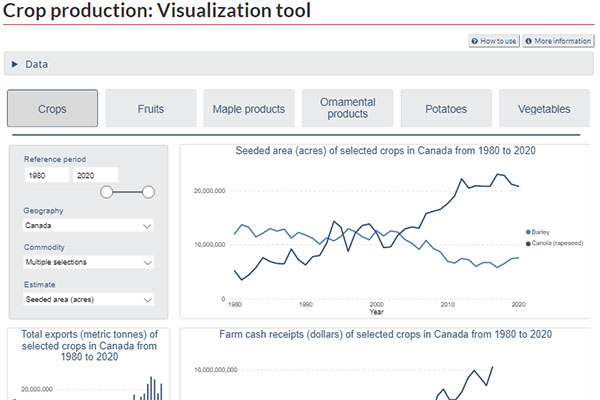









 Adult learning
Adult learning Apprenticeship and trades
Apprenticeship and trades Early childhood education
Early childhood education Education and labour market outcomes
Education and labour market outcomes Education indicators
Education indicators Educational attainment and qualifications
Educational attainment and qualifications Elementary and secondary education
Elementary and secondary education Financial resources invested in education
Financial resources invested in education Literacy
Literacy Postsecondary education
Postsecondary education








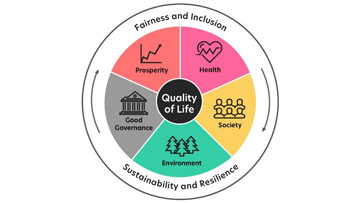




 Census counts
Census counts Fertility (births)
Fertility (births) Migration
Migration Mortality (deaths)
Mortality (deaths) Population estimates
Population estimates Population projections
Population projections

